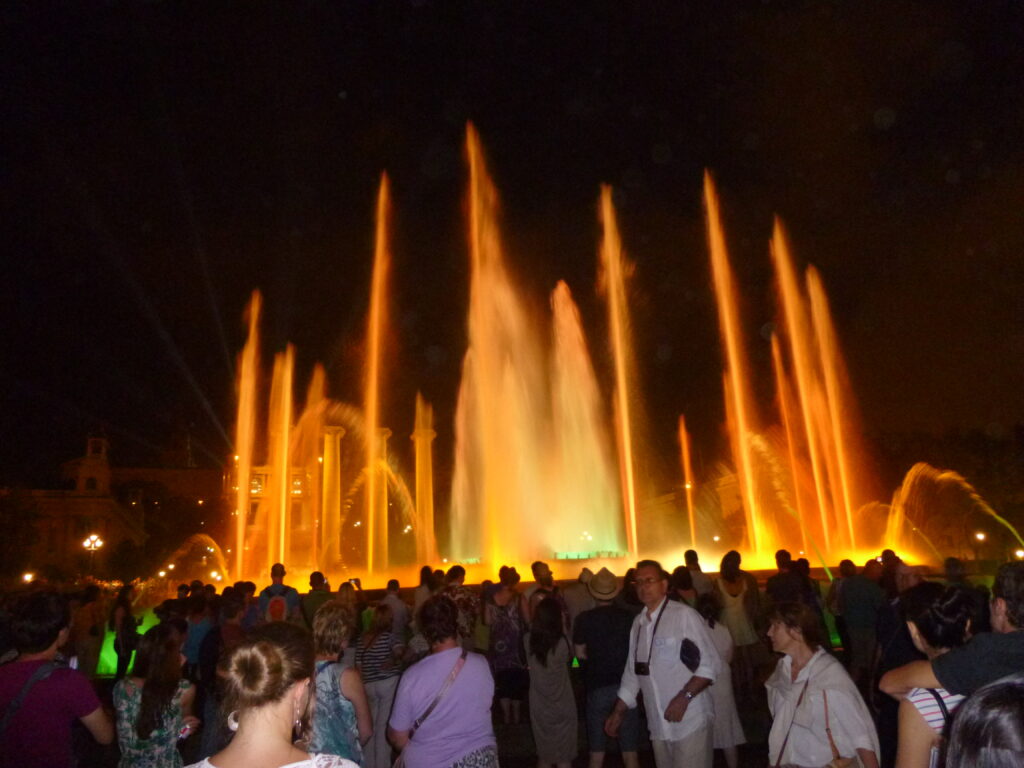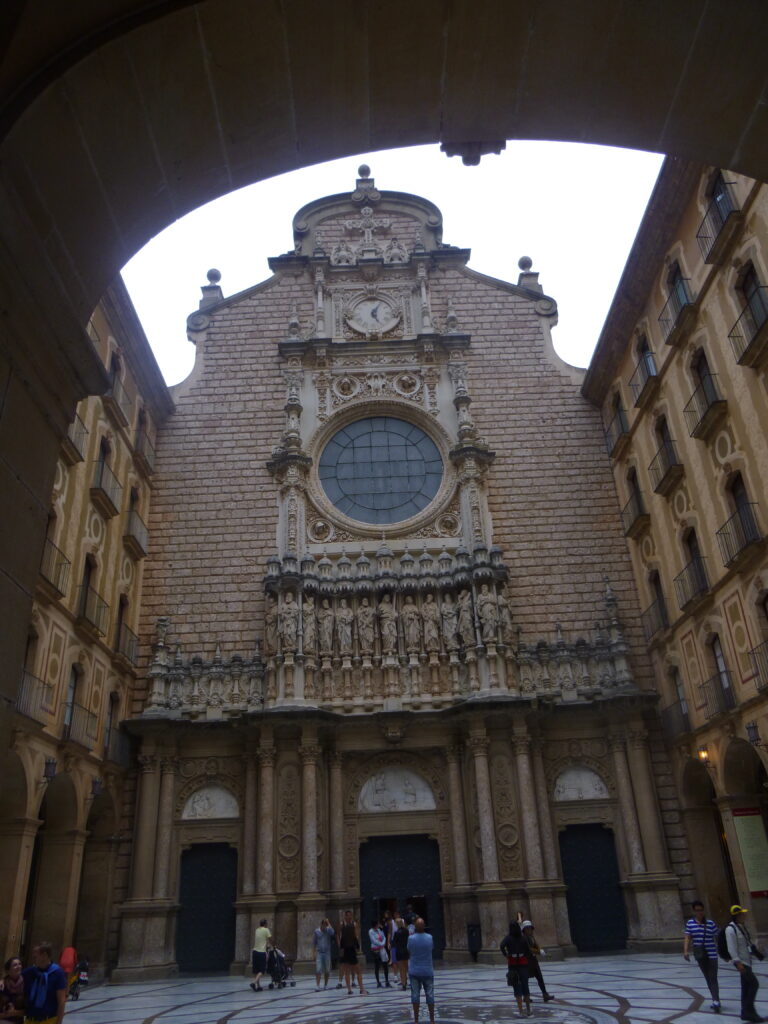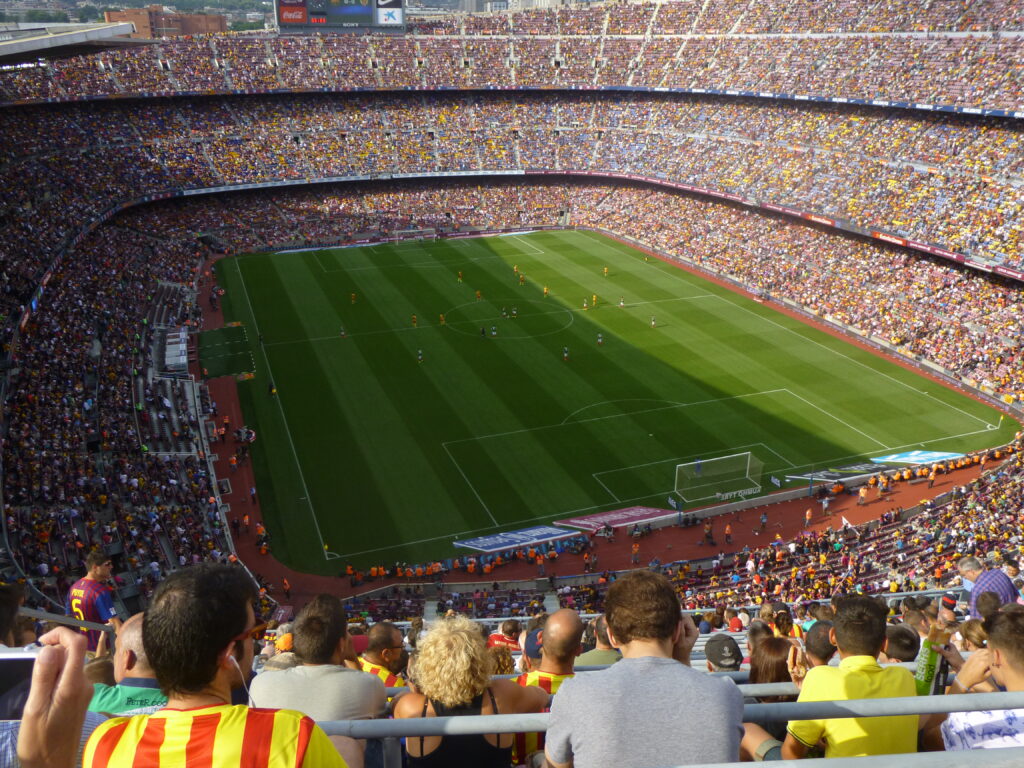Barcelona, the vibrant capital of Catalonia, offers a rich tapestry of history, culture, and architecture. Founded as the Roman colony Barcino over 2,000 years ago, the city evolved into a key medieval maritime power and later flourished during the Catalan modernist movement, most notably through the visionary works of Antoni Gaudí. Though it endured political unrest during the 20th century, including the Spanish Civil War, Barcelona emerged stronger, gaining global recognition after the transformative 1992 Olympics. Today, it’s a dynamic city where ancient ruins, Gothic cathedrals, and bold modernist designs coexist—offering visitors world-class cuisine, art, and architecture, often accessible at little or no cost.
The Same
The Family and The Dinks both made sure to visit the main attractions of Barcelona, ensuring they experienced the essence of this beautiful city.
Sagrada Familia
The Sagrada Família is one of Barcelona’s most iconic landmarks. Designed by the renowned Catalan architect Antoni Gaudí, the Sagrada Família is an architectural masterpiece that blends Gothic and Art Nouveau styles with Gaudí’s distinctive organic forms and symbolism. The basilica’s intricate facades, towering spires, and ornate sculptures make it a breathtaking sight to behold. Construction of the Sagrada Família began in 1882 and continues to this day, with completion projected for the early 2020s. The ongoing construction process has become a symbol of Barcelona’s resilience and creativity, attracting millions of visitors each year to witness the evolution of Gaudí’s vision. The basilica features three facades, each depicting different scenes from the life of Jesus Christ and the Christian faith. The Nativity Facade, depicting the birth of Jesus, is adorned with intricate sculptures and symbols of nature. The Passion Facade, depicting the crucifixion of Jesus, is characterized by its stark and angular forms, representing the suffering of Christ. The Glory Facade, currently under construction, will depict the themes of death, judgment, and glory.
Gothic Quarters
The Gothic Quarter, or Barri Gòtic, is the historic heart of Barcelona. It’s a labyrinthine area filled with narrow streets, charming squares, and historic buildings. The Gothic Quarter is characterized by its narrow winding streets, hidden squares, and well-preserved medieval buildings. Visitors can admire architectural gems such as the Barcelona Cathedral (Catedral de Barcelona), with its stunning Gothic facade and cloistered courtyard, as well as the Plaça del Rei, a picturesque square surrounded by medieval palaces. The Gothic Quarter is home to several historic landmarks and cultural attractions that offer insights into Barcelona’s rich history and heritage. Highlights include the Palau de la Generalitat, the seat of the Catalan government; the Plaça Sant Jaume, the political heart of the city; and the ancient Roman walls and ruins that date back to Barcelona’s founding as a Roman colony. It’s a fantastic place to wander, explore medieval architecture, and discover cozy cafes and shops.
La Rambla
La Rambla is Barcelona’s most famous street, a bustling promenade stretching for 1.2 kilometers from Plaça de Catalunya to the Christopher Columbus Monument at Port Vell. La Rambla is lined with outdoor cafés, bars, and restaurants where visitors can relax and soak in the vibrant ambiance while enjoying a drink or a meal. Whether you’re craving traditional Spanish tapas, international cuisine, or refreshing beverages, there’s no shortage of dining options to choose from along this bustling street. Be sure to explore La Boqueria Market along the way for delicious local treats. La Rambla is known for its lively atmosphere and street performers who entertain passersby with music, dance, and other artistic performances. Visitors can expect to encounter everything from human statues and living sculptures to musicians, magicians, and artists showcasing their talents along the bustling boulevard. Along La Rambla, visitors will encounter several historic landmarks and points of interest, including the Gran Teatre del Liceu, Barcelona’s renowned opera house; the Palau de la Virreina, a historic palace now used for cultural exhibitions and events; and the Font de Canaletes, a famous fountain and meeting point for locals and visitors alike.
The Magic Fountain of Montjuïc
The Magic Fountain is renowned for its captivating water and light shows, which take place several times a week.
- Shows: During these shows, the fountain comes to life with choreographed displays of water jets, synchronized to music and illuminated by colorful lights. The combination of water, music, and light creates a mesmerizing and magical experience for spectators of all ages. The fountain shows typically take place in the evenings, with varying schedules depending on the time of year. During the summer months, the shows may occur more frequently, while in the winter, they may be less frequent or scheduled earlier in the evening. It’s advisable to check the official schedule in advance to plan your visit accordingly.
- Fountain: The Magic Fountain is not only a popular tourist attraction but also an iconic landmark in Barcelona. It was built for the 1929 International Exposition held in the city and has since become a symbol of Barcelona’s cultural heritage and artistic flair. The fountain’s grandeur and beauty make it a must-see destination for visitors exploring the city.
- Surrounding Attractions: Montjuïc Hill is home to a variety of other attractions and points of interest that visitors can explore before or after visiting the Magic Fountain. These include the Montjuïc Castle, the Joan Miró Foundation, the Olympic Stadium, and the Montjuïc Botanical Garden. Visitors can easily spend a full day exploring the hill’s cultural and natural attractions.
Local Cuisine
We both also made an effort to try local cuisine. Barcelona boasts a rich culinary tradition with a variety of local dishes that reflect its vibrant culture and Mediterranean influences.
- Paella: While originating from Valencia, paella is popular throughout Spain, including Barcelona. This iconic dish features saffron-infused rice cooked with seafood such as shrimp, mussels, and squid, or with meat like chicken and rabbit. It is a must when visiting Barcelona.
- Tapas: Tapas are small, savory dishes typically served as appetizers or snacks. In Barcelona, you’ll find a wide range of tapas, including patatas bravas (fried potatoes with spicy tomato sauce), jamón ibérico (cured ham), croquetas (croquettes filled with various ingredients), and pulpo a la gallega (Galician-style octopus).
- Fideuà: Similar to paella but made with short strands of pasta (fideos) instead of rice, fideuà is cooked with seafood or meat in a rich broth, often flavored with garlic, tomatoes, and saffron.
- Crema Catalana: A traditional Catalan dessert similar to crème brûlée, crema catalana features a creamy custard base flavored with cinnamon and lemon zest, topped with a caramelized sugar crust.
- Churros con Chocolate: While not exclusive to Barcelona, churros (fried dough pastries) dipped in thick hot chocolate make for a popular and indulgent snack or dessert in the city.
The DINKs
We were really surprised by how much we loved Spain in general. We had almost five days there so we had time to explore outside the city a bit as well.
Montserrat
Montserrat’s distinctive rock formations, rugged cliffs, and lush vegetation make it one of Catalonia’s most picturesque destinations. The mountain range rises dramatically from the surrounding landscape, offering panoramic views of the Catalan countryside and the Mediterranean Sea beyond. Visitors can explore the mountain’s hiking trails, viewpoints, and scenic overlooks, immersing themselves in the tranquility and natural splendor of this iconic destination.
- Benedictine Monastery: At the heart of Montserrat lies the Santa Maria de Montserrat Abbey, a Benedictine monastery that has been a place of pilgrimage and worship for over a thousand years. The monastery is home to the revered statue of the Black Madonna, known as La Moreneta, which is believed to have miraculous powers. Visitors can explore the monastery’s basilica, chapels, and museum, learning about its rich history, religious significance, and the daily lives of the monks who reside there.
- Black Madonna: The statue of the Black Madonna is a symbol of Catalan identity and spirituality, and pilgrims from around the world come to Montserrat to pay homage to this revered icon. The statue is housed in the basilica of the monastery and can be viewed by visitors during regular visiting hours. Many pilgrims also participate in religious rituals and ceremonies, such as attending mass, lighting candles, or praying before the statue.
- Escolania de Montserrat: Montserrat is also home to the Escolania de Montserrat, one of the oldest boys’ choirs in Europe. Founded in the 13th century, the choir performs daily concerts and religious services in the basilica of the monastery, enchanting visitors with their angelic voices and musical talent. Attending a performance by the Escolania is a highlight of any visit to Montserrat and offers a glimpse into Catalonia’s rich musical heritage.
Soccer (Futbal) Game & FC Barcelona Camp Nou museum
Camp Nou is the iconic home stadium of FC Barcelona, one of the world’s most famous football clubs. Attending a live match at this colossal stadium is an exhilarating experience. The Camp Nou museum is a football lover’s paradise. It houses an extensive collection of memorabilia, trophies, and exhibits showcasing the history and achievements of FC Barcelona. Visitors can explore the club’s rich history, including iconic moments, legendary players, and historic jerseys. Highlights include the Ballon d’Or trophies won by former players like Lionel Messi.
Gaudí Tour
Antoni Gaudí, a visionary Spanish architect and designer hailing from Catalonia, stands as the unrivaled champion of Catalan Modernism. The majority of his masterpieces grace the vibrant streets of Barcelona, a testament to his profound influence on the city’s aesthetic tapestry including Casa Batlló, Sagrada Familia, and Parc Güell.
- Casa Batlló: Start your Gaudí Tour with a visit to Casa Batlló, a whimsical and enchanting masterpiece located along the elegant Passeig de Gràcia. Admire the building’s fantastical façade, adorned with colorful mosaic tiles, undulating curves, and organic motifs inspired by nature. Explore the interior of this modernist gem, characterized by its fluid spaces, intricate details, and imaginative design elements that showcase Gaudí’s innovative approach to architecture.
- Sagrada Familia: See info Above.
- Parc Güell: Conclude your Gaudí Tour with a stroll through Parc Güell, a whimsical park that showcases Gaudí’s imaginative vision and playful style. Wander along winding pathways, past vibrant mosaic sculptures, and through lush gardens that offer panoramic views of the city below. Discover the iconic mosaic lizard, the colorful serpentine bench, and other architectural wonders that populate this enchanting oasis of creativity and beauty.
- Casa Milà (La Pedrera): While not officially part of the Gaudí Tour, Casa Milà, also known as La Pedrera, is another masterpiece of modernist architecture worth exploring. Admire the undulating stone facade, innovative structural elements, and rooftop terrace with its surreal chimneys and panoramic views of Barcelona. Learn about Gaudí’s innovative design principles and his contribution to the cultural heritage of Catalonia.
- Casa Vicens: For those seeking a deeper dive into Gaudí’s oeuvre, Casa Vicens offers a lesser-known but equally fascinating example of his architectural genius. Explore this colorful and eclectic house, originally designed as a summer residence for a wealthy businessman, and marvel at its intricate details, vibrant tiles, and lush gardens that reflect Gaudí’s fascination with nature and craftsmanship.
Beach
Total miss. We weren’t comfortable getting in the water. It just didn’t seem clean. Luckily it wasn’t far from our hotel. If you want a nice beach, you have to go about an hour outside the city.
The Family
The Barcelona subway made it easy to explore with kids, though one steep hill posed a stroller challenge. A couple of days with kids felt great, but there was plenty to do for a longer stay.
Flamengo Show
“Flamenco” is a traditional Spanish art form that originated in Andalusia, known for its passionate dance, soulful music, and intricate guitar playing. Flamenco is meant to be emotionally intense. We liked the show, but when the male performers appeared, our 3-year-old daughter got scared due to their loud wailing. (She is sensitive to loud Sounds.) We decided to leave halfway through to ensure our daughter’s travel experiences weren’t negatively impacted.
Barcelona Zoo
Barcelona Zoo is home to a wide variety of animals, including mammals, birds, reptiles, and amphibians. Visitors can explore different themed areas within the zoo, such as the African Savannah, the Amazon Rainforest, and the Australasia exhibit, where they can observe animals in habitats that closely resemble their natural environments. In addition to its animal exhibits, Barcelona Zoo features a botanical garden that showcases a diverse collection of plants from around the world. Visitors can explore lush gardens, tropical greenhouses, and themed landscapes while learning about the importance of plant conservation and biodiversity. I felt like this was a miss but my kids and husband enjoyed it. It was extremely small and several exhibits were closed for renovation.
To hear more about the The Family Trip to Spain
Summary
In exploring Barcelona, both the DINKs and the Family immersed themselves in the city’s vibrant culture and iconic landmarks. They shared experiences at must-see sites such as the awe-inspiring Sagrada Familia, the historic Gothic Quarters, bustling La Rambla, and the enchanting Magic Fountain of Montjuïc, while savoring the flavors of local cuisine.
The DINKs added unique dimensions to their visit with a day trip to Montserrat for its stunning mountain scenery, indulging in a Soccer (Futbol) Game at FC Barcelona’s legendary Camp Nou stadium, and delving into the artistic legacy of Antoni Gaudí through a dedicated tour.
Conversely, the Family enjoyed cultural performances, including a vibrant Flamenco Show, and delighted in a visit to the Barcelona Zoo, creating memorable experiences tailored to family-friendly attractions.
Both perspectives highlight Barcelona’s diverse appeal, offering something for every traveler, whether exploring its architectural marvels, indulging in culinary delights, or experiencing its rich cultural offerings. Barcelona’s timeless allure continues to enchant visitors with its blend of tradition, innovation, and Mediterranean charm, ensuring each visit is as unique and captivating as the city itself.



























Leave a Reply